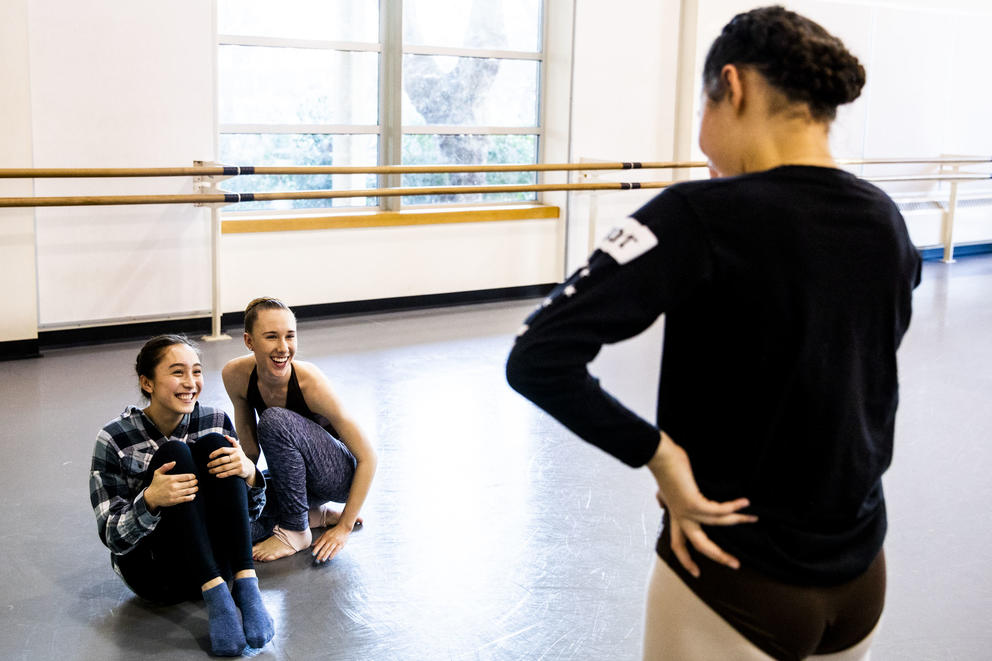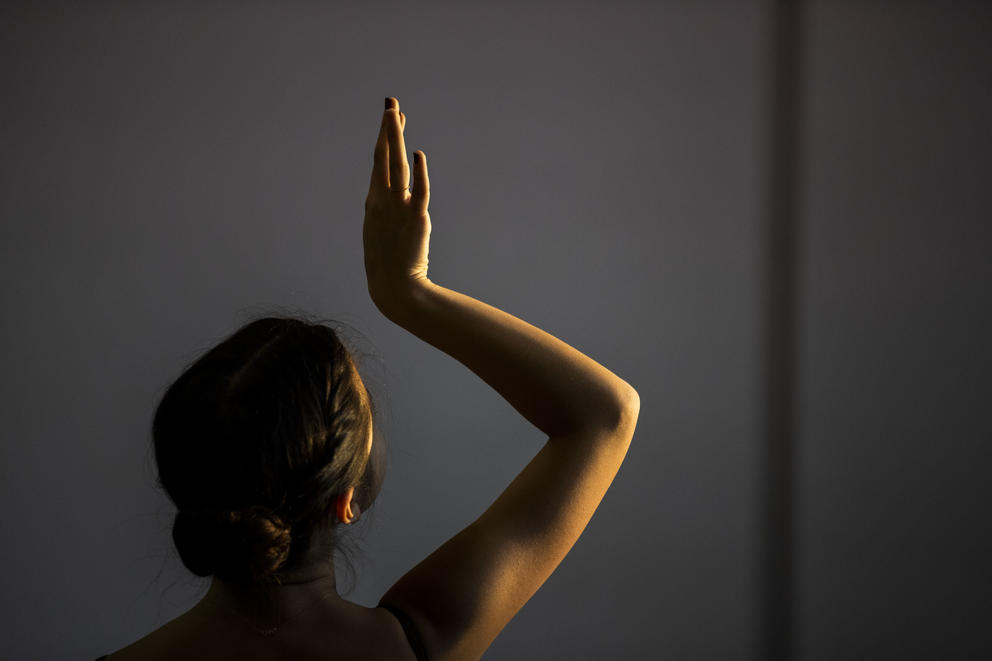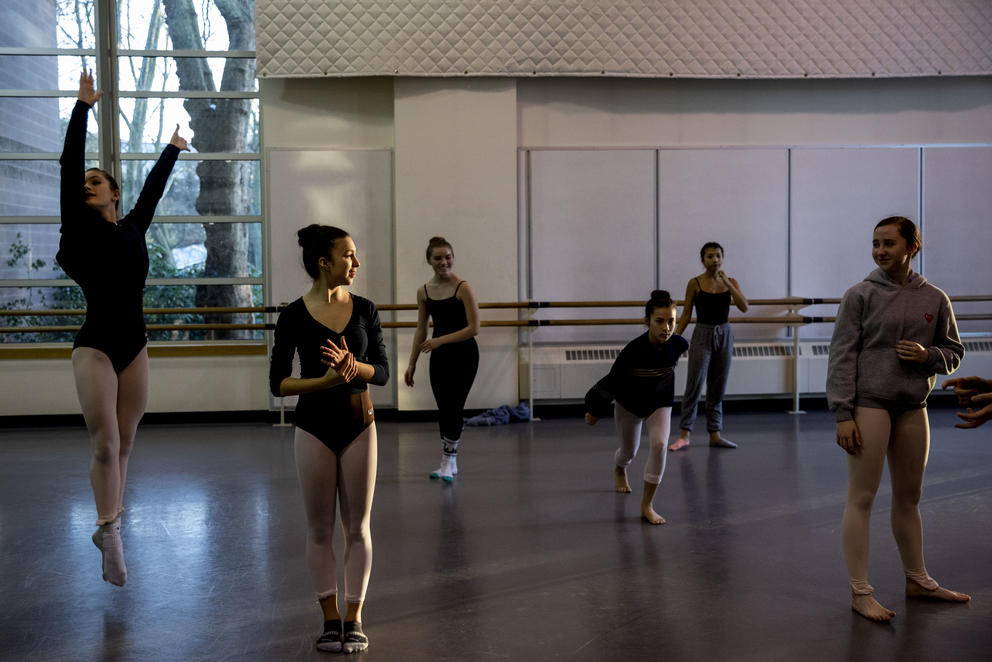“Ballet is woman,” said legendary choreographer George Balanchine. He had a point, except when it comes to the choreography.
While modern dance has long drawn female choreographers, contemporary ballet remains largely created by men. The women who tend to pop up on seasonal ballet lineups — Twyla Tharp, Jessica Lang, Annabelle Lopez Ochoa — are exceptions to a norm that has existed since approximately the Renaissance. (PNB’s 2018-2019 season includes 13 male choreographers and just one woman, Robin Mineko Williams, on the Director’s Choice mixed bill.)
In an effort to help right this disparity, PNB School Director Peter Boal has said he is currently working to “rectify an imbalance that exists in ballet.” This fall, PNB launched a program that aims to dig toward the root of the problem by encouraging women to consider choreography as early as young teens.
Get the latest in local arts and culture
This weekly newsletter brings arts news and cultural events straight to your inbox.
The academic-year-long course, New Voices: Choreography and Process for Young Women in Dance, kicked off in September. By May, the students will be creating work for fellow dancers to perform. But for their midyear presentation, each of the 19 students created a 2.5-minute solo to perform themselves.
The students sport a variety of ballet attire for their choreographic debut: tights over bodysuits, short wrap skirts, toe shoes and taped bare feet. Before they begin, instructor and longtime choreographer Eva Stone attempts to dial down the nerves. “We’re treating this as a rehearsal,” she says to the audience. “If there’s a mistake, we’ll just start over.”
Stone goes on to note how much confidence the girls have already gained in the class. “On the first day, when I told them they would perform a solo in class every week, they turned a shade of gray,” she says. The girls laugh in acknowledgment. “But pretty soon they all wanted to go first.”
Ballet students engage in a movement study about focus in a choreography class taught by Eva Stone at Pacific Northwest Ballet on Feb. 6, 2019. Called “New Voices: Choreography and Process for Young Women in Dance,” it’s PNB’s first-ever, year-long program aimed at increasing the numbers of women who choreograph ballet. (Photo by Dorothy Edwards/Crosscut)
Ballet students engage in a movement study about focus in a choreography class taught by Eva Stone at Pacific Northwest Ballet on Feb. 6, 2019. Called “New Voices: Choreography and Process for Young Women in Dance,” it’s PNB’s first-ever, year-long program aimed at increasing the numbers of women who choreograph ballet. (Photo by Dorothy Edwards/Crosscut)
Ballet students engage in a movement study about focus in a choreography class taught by Eva Stone at Pacific Northwest Ballet on Feb. 6, 2019. Called “New Voices: Choreography and Process for Young Women in Dance,” it’s PNB’s first-ever, year-long program aimed at increasing the numbers of women who choreograph ballet. (Photo by Dorothy Edwards/Crosscut)
Ballet students engage in a movement study about focus in a choreography class taught by Eva Stone at Pacific Northwest Ballet on Feb. 6, 2019. Called “New Voices: Choreography and Process for Young Women in Dance,” it’s PNB’s first-ever, year-long program aimed at increasing the numbers of women who choreograph ballet. (Photo by Dorothy Edwards/Crosscut)
Ballet students engage in a movement study about focus in a choreography class taught by Eva Stone at Pacific Northwest Ballet on Feb. 6, 2019. Called “New Voices: Choreography and Process for Young Women in Dance,” it’s PNB’s first-ever, year-long program aimed at increasing the numbers of women who choreograph ballet. (Photo by Dorothy Edwards/Crosscut)
One by one, the dancers take their turn in the middle of the room. Some employ the angles of modern dance, some reveal more traditional ballet moves on pointe. One begins with a blindfold, another adds flavor with a dash of flamenco, a third yanks her loose white shirt back and forth in tumult. Several girls slap their bodies to amplify rhythm, and many use articulated hand gestures to invent forms — an invisible string pulled from the crown of the head; two fingers held at the temple, like a single horn.
One dancer does spoken word in the style of a beat poet, calling out the elements of dance. “We, as choreographers, must give it meaning,” she says, moving briskly.
Stone says her class focuses on the most basic building blocks of dance — time, space and energy — so that the young women can develop their own voices. “My assignments lead to more modern and contemporary ballet,” she says, because instead of having them practice pirouetting, for example, she asks them to create movement in response to “positive and negative space, direct or indirect focus” or “as many ‘ing’ words as they could write down in one minute.”
She also has them choreograph in silence. “They learn to build material without the support of music,” Stone says. When the piece is completed and ready for accompaniment, her rule is no songs with lyrics and no movie soundtracks. “I want the movement to speak first,” she explains.
At the recital, the girls are poised and sure-footed. They hold their final poses until the music stops, at which point their perfect posture collapses and they smile self-consciously, instantly transformed from graceful performers back into bashful teenagers.
During a Q and A afterward, several girls talk about how the class has changed the way they consume dance. “I see it differently,” a student in toe shoes says. “Now I’m thinking about what the choreographer was thinking.” Another young woman, wearing black tights and a black bodysuit, says, “I can’t watch dance now without thinking about the intended message — and whether it changed halfway through.”
Stone smiles. “If this class doesn’t turn them into great choreographers,” she says, “it’ll turn them into great dance critics.”
The dearth of female choreographers, she says, often leads companies attempting to level the playing field to grab an established dancer and say, “You! You’re a woman! Choreograph something!” But Stone says that’s setting them up for failure if they don’t have choreographic training. “I want to give these young women tools, just like a carpenter. A saw, a hammer, so they can choose to build something of value,” she says. “So they can share their point of view in the coolest medium ever.”
In the studio, the young dancers have one more audience question to answer. A man asks how many of them plan to keep making dance.
As if choreographed, a sea of hands shoots up in the air.
Crosscut arts coverage is made possible with support from Shari D. Behnke.








